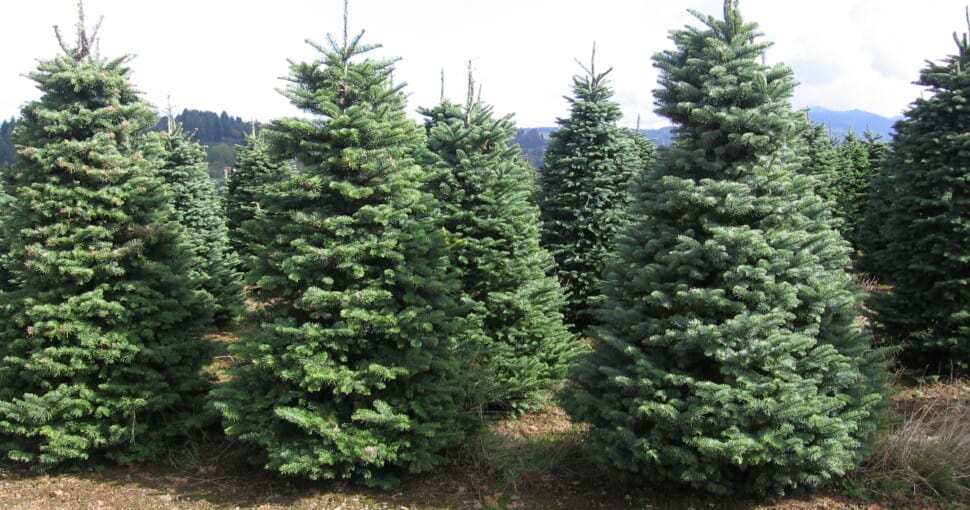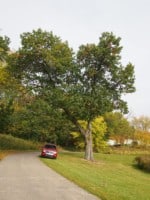Christmas trees became a part of German traditions in the seventeenth century. The Germans brought their culture to America, and the first Christmas tree was erected in Pennsylvania in the 1830s. Christmas trees evoke the warmth and good cheer of Christmas with their twinkling lights and aromatic scent.
Contents
The Douglas fir (Pseudotsuga menziesii) is the USA’s most widely chosen Christmas tree. The Douglas fir is an evergreen tree that grows in the classic conical shape typical of Christmas trees. They usually grow in dense forests and reach up to two hundred and fifty feet tall and six feet in diameter.
Related: The 25 Biggest Trees in America
Douglas firs are conifers with long, flat needles arranged in a spiral. The needles may be yellow-green or blue-green. Douglas firs produce seeds in cones that have brown scales and measure two to four inches.
There are two kinds of Douglas fir, the Coastal Douglas fir and the Rocky Mountain Douglas fir. The Coastal Douglas fir grows bigger and is less cold tolerant than the Rocky Mountain Douglas fir. The Coastal Douglas fir grows best in humid, mild climates and is generally found on the west coast of America.
Douglas firs provide food and shelter for many wildlife species and are an important part of the ecosystem. Fortunately, they are grown in large numbers as they are popular as Christmas trees and for their wood. They are also known as Oregon pine and Douglas trees.
There are many trees that look like Douglas fir Christmas trees.
1. Balsam Fir
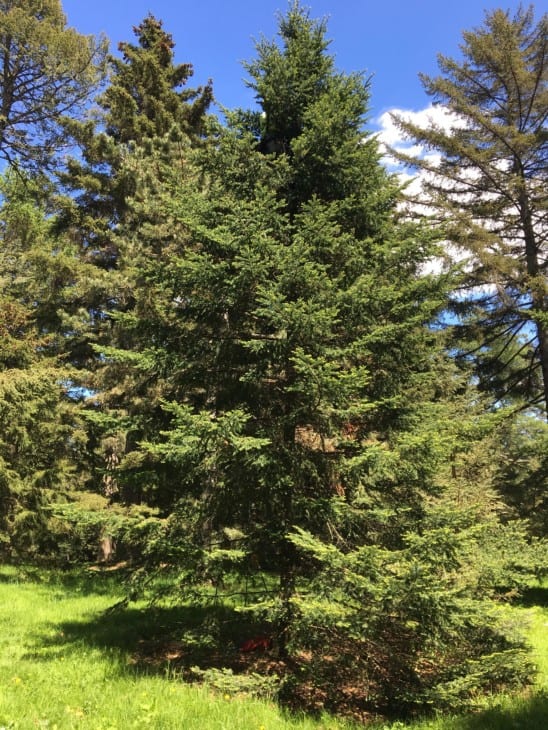
The Balsam fir (Abies balsamia) is an evergreen tree that looks similar to the Douglas fir Christmas tree. It grows naturally from Canada through to West Virginia. Balsam firs are particularly common in New England, where they grow in forests, swamps, and on the edges of wetlands.
The Balsam fir makes an impressive feature in a landscape, standing like a tall, dark sentinel. It has dark green needles that are one to three inches long. The needles have a strong sweet-smelling fragrance known as balsam. The tree grows in a cone or pyramid shape, common in Christmas trees.
Balsam fir trees are renowned for producing copper-brown cones that grow upright on the tree, looking just like candles on a Christmas tree in years gone by. They have dark brown bark, which oozes a fragrant resin or balsam. The tree is sometimes known as the Balm of Gilead. This is a biblical reference to the aromatic resin used as an ingredient in a healing balm.
2. Concolor Fir
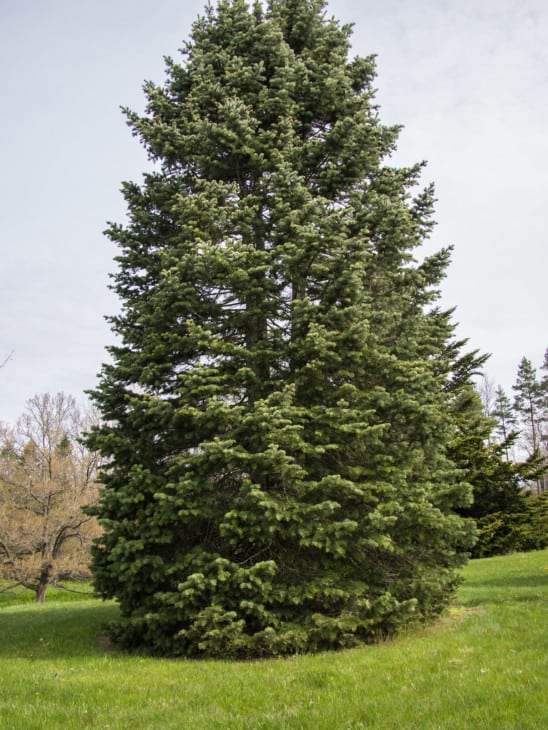
Concolor fir (Abies concolor) is a tree that looks like a Christmas tree and is also known as a white fir. The concolor fir is evergreen and native to the western United States. The trees can grow from one hundred and thirty to one hundred and fifty feet tall.
Concolor firs are usually smaller when planted in gardens and grow to thirty to fifty feet. These are long-lived trees and can live up to three hundred and fifty years. Concolor white fir trees grow in a symmetrical pyramid shape that is the iconic Christmas tree image. It is used as a wind block, privacy screen, and focal point in gardens.
Concolor firs have long blue-green or powder blue needles, making them an attractive alternative to the usual green Christmas trees. The needles are aromatic with a strong citrus or orange scent. There are various species of Concolor fir trees, with some better adapted to cold climates than others.
Concolor firs grow in most soil types, except clay, as they prefer well-draining soil. They can grow in full sun or partial shade, and many gardeners choose to grow them in small groups. Concolor firs are susceptible to scale, aphids, and spider mites.
3. Scots Pine
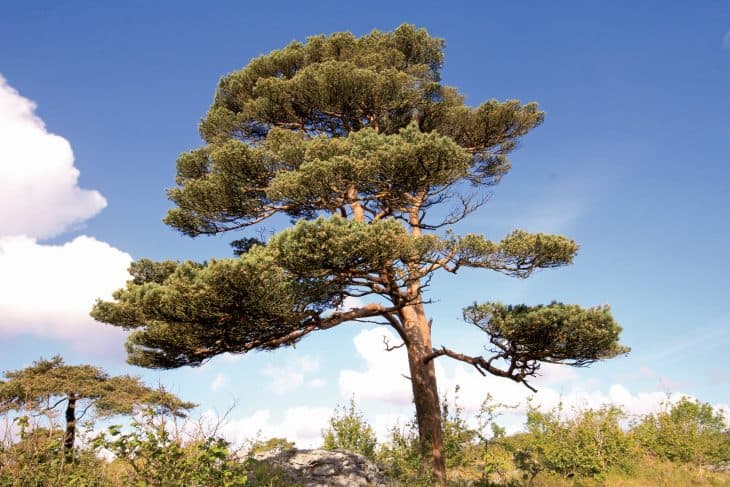
Scots pine trees (Pinus sylvestris) are evergreen plants from the Pinaceae or pine family. They are native to Europe but have become popular in the United States, especially for the reclamation of disturbed or compromised sites. Scots pines are hardy trees that look similar to Christmas trees.
Scots pines are conifers that can grow up to one hundred and fifteen feet and live for seven hundred years. The bark is scaly, red to orange-brown, and often peels away, leaving unusual, attractive patterns. The one-to-two-inch needles are blue-green in summer but change to yellow-green in winter.
Scots pine trees grow in most soil types and tolerate alkaline conditions. They grow best in fertile, well-drained soil in full sunlight. Male and female flowers occur on the same tree. Female flowers turn into cones and take a year to mature.
4. Blue Spruce
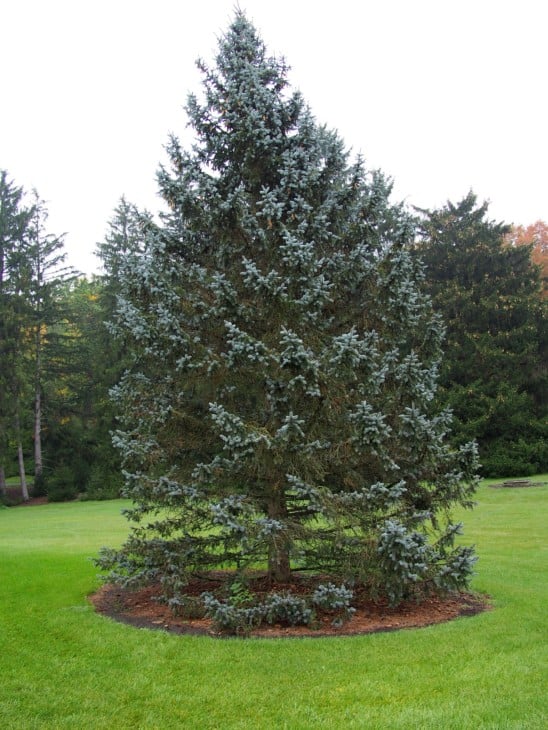
Blue spruce (Picea pungens) is an evergreen tree known colloquially as Colorado spruce, white spruce, or green spruce. It grows in a cone or pyramid and is native to Colorado, Arizona, Utah, Wyoming, Idaho, and New Mexico. It grows to forty-nine to seventy-five feet tall, depending on the available space and location.
The Blue Spruce has needles like most Christmas trees. Its needles are waxy blue-green or grey-green and about one inch long. The bark on the trunk is grey but brown on the branches. Blue spruce trees have pale brown male and female cones about four inches long.
Blue spruce trees are sensitive to frost, but older trees are more cold-tolerant. Young plants are sensitive to drying out and should always be kept moist. Blue spruces grow best in well-drained rich soil in full sun or partial shade.
5. Leyland Cypress
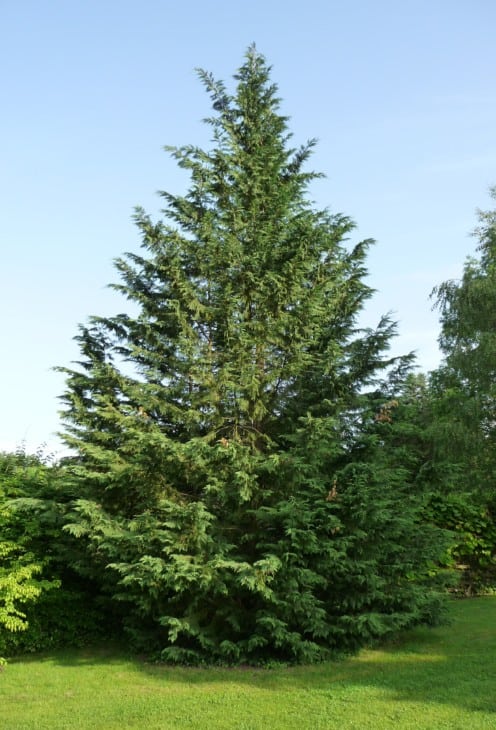
Leyland Cypress (Cupressus x leylandii) are fast-growing, pyramidal conifers that grow up to one hundred and thirty-one feet. Poor soil will result in smaller trees. Leyland cypress trees are hybrids of Monterey and Nootka cypresses. As a hybrid, they are sterile and propagated by cuttings.
Leyland cypress trees have short needles that are usually green, but the cultivar determines the shade. Their bark is dark red to brown and heavily grooved. The Leyland cypress tree has dense foliage and is prone to broken branches from heavy snowfalls.
Leyland cypresses tolerate many soils but need full, regular sunlight to thrive. They have a shallow root system, making them prone to falling over if the ground becomes too waterlogged or there are high winds. Leyland cypresses tolerate high levels of pollution and salt.
Leyland cypresses are used as privacy hedges or trees because of their rapid growth and thick foliage. The trees have small grey or chocolate-brown cones. Leyland cypresses are susceptible to cankers, and their sap is irritating to many people.
6. Northern White Cedar
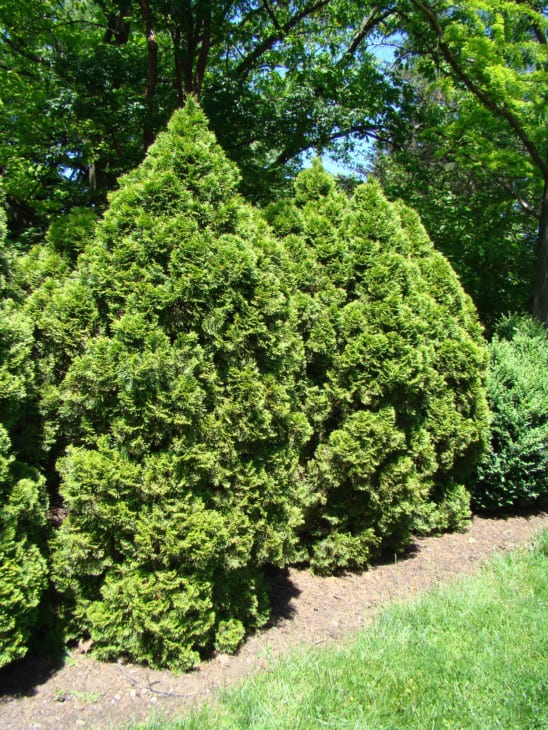
The Northern white cedar (Thuja occidentalis) is an evergreen from the Cupressaceae family. It is also known as swamp cedar or eastern white cedar. The Northern white cedar grows naturally in eastern Canada and the northern United States. It is a medium size tree, growing to about forty-nine feet tall, but the size is determined by its location.
Related: 20 Most Common Trees in North America
Northern white cedar has dense foliage and grows in a narrow cone or pyramid. The leaves are flattened scale-like needles arranged in a fan around the branches. The leaves are generally yellow-green and have a pleasant scent typical of Christmas trees. Northern white cedar bark is grayish brown and comes off easily in strips.
They require full sunlight for optimal growth. Northern white cedars have half-inch-long cones that are yellowish brown. The cones may occur singly or in clusters. Northern white cedars grow best in moist, well-drained fertile soil but may adapt to other soils. The best climate for them is one with cool, short summers.
Northern white cedars are similar to Christmas trees but usually more narrow in shape.

